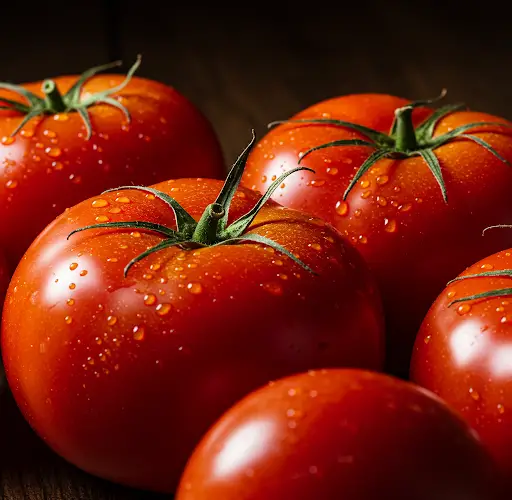Harvesting Many Tomatoes for Market Sale – Gardening and Cooking Tips
Growing and selling tomatoes can be an incredibly rewarding endeavor, whether you’re a home gardener looking to make extra income or a small-scale farmer supplying fresh produce to local markets. With proper care, timing, and harvesting techniques, you can maximize your yield, ensuring your tomatoes are fresh, flavorful, and ready for sale. Additionally, knowing how to use excess tomatoes in delicious recipes can further increase your profit and reduce waste.
In this guide, we’ll walk you through how to successfully grow, harvest, and prepare tomatoes for market sale, along with some cooking ideas to make the most of your crop.
Choosing the Right Tomato Varieties for Market
To have a successful tomato harvest, selecting the right variety is crucial. Some tomatoes are best for fresh sale, while others are ideal for cooking and processing.
Best Tomatoes for Selling Fresh:
- Cherry Tomatoes (Sweet 100, Sun Gold, Black Cherry) – Small, sweet, and perfect for snacking.
- Beefsteak Tomatoes (Big Boy, Brandywine, Cherokee Purple) – Large and flavorful, great for slicing.
- Roma Tomatoes (San Marzano, Plum Regal) – Firm and ideal for sauces and pastes.
- Grape Tomatoes (Red Grape, Juliet, Yellow Pear) – Resistant to splitting and popular for salads.
Best Tomatoes for Cooking and Processing:
- San Marzano – Preferred for rich tomato sauces.
- Amish Paste – Great for canning and making tomato paste.
- Rutgers – A classic choice for soups, stews, and sauces.
Growing and Caring for Tomatoes for Maximum Yield
Tomatoes require proper care throughout their growing season to ensure a high-quality harvest. Here are the key factors to focus on:
1. Soil Preparation and Planting
- Choose well-draining soil with a pH of 6.2 to 6.8.
- Enrich the soil with compost or aged manure to provide essential nutrients.
- Space plants at least 18-24 inches apart to allow good air circulation and prevent diseases.
2. Watering and Fertilizing
- Keep the soil consistently moist, providing 1-2 inches of water per week.
- Use mulch to retain moisture and regulate soil temperature.
- Fertilize with a balanced formula (10-10-10) during early growth and switch to a phosphorus-rich formula (5-10-10) once flowering begins.
3. Pruning and Supporting Plants
- Remove lower leaves to prevent fungal infections and improve air circulation.
- Use cages, stakes, or trellises to support the plants and keep fruit off the ground.
4. Pest and Disease Control
- Monitor for pests like aphids, tomato hornworms, and whiteflies. Use neem oil or insecticidal soap if needed.
- Prevent diseases like blight and powdery mildew by rotating crops and keeping plants dry.
Harvesting Tomatoes at the Right Time
Proper harvesting ensures the best flavor and shelf life for market sale. Follow these tips:
- Pick when tomatoes are fully colored but still firm. Overripe tomatoes may bruise easily.
- For vine-ripened tomatoes, wait until they turn their mature color (red, yellow, or orange) and gently twist them off the vine.
- For shipping or storage purposes, harvest at the breaker stage (when the first blush of color appears) and allow them to ripen off the vine.
- Handle with care to avoid bruising and damage.
Preparing Tomatoes for Market Sale
To attract customers, your tomatoes should be fresh, clean, and properly packaged:
1. Sorting and Grading
- Grade A: Perfectly shaped, ripe, and free from blemishes – best for fresh sale.
- Grade B: Slightly misshapen or minor imperfections – ideal for bulk sale or cooking.
- Grade C: Overripe or damaged – best for processing into sauces and pastes.
2. Cleaning and Storage
- Gently wash tomatoes in clean water and dry them thoroughly.
- Store at room temperature (50-70°F) to avoid loss of flavor. Refrigeration can make tomatoes mealy.
- Pack in ventilated crates or baskets for transport.
3. Selling Strategies
- Farmers’ Markets: Set up an attractive display with clear pricing.
- Local Stores and Restaurants: Offer bulk deals to nearby businesses.
- Online Sales: Use social media or farm websites to reach more customers.
- Value-Added Products: Consider selling homemade salsa, sauce, or sun-dried tomatoes.
Cooking and Preserving Excess Tomatoes
If you have a surplus of tomatoes, turning them into delicious homemade products can boost your profits and reduce waste.
1. Homemade Tomato Sauce
Ingredients:
- 10 ripe tomatoes
- 2 cloves garlic (minced)
- 1 onion (chopped)
- 1 tsp salt
- 1 tbsp olive oil
- 1 tsp dried basil
Instructions:
- Boil tomatoes for 1 minute, then peel the skins off.
- Blend peeled tomatoes into a smooth purée.
- In a pan, sauté garlic and onions in olive oil.
- Add the tomato purée, salt, and basil.
- Simmer for 30 minutes, then store in jars.
2. Sun-Dried Tomatoes
- Slice tomatoes into thin rounds.
- Lay them on a baking sheet and sprinkle with salt.
- Dry in the oven at 200°F (90°C) for 4-6 hours.
- Store in an airtight container with olive oil.
3. Tomato Jam
- Cook chopped tomatoes with sugar, lemon juice, and spices.
- Simmer until thickened and store in jars.
Conclusion
Harvesting and selling tomatoes is a profitable venture when done correctly. By choosing the right varieties, providing proper care, and harvesting at the right time, you can produce high-quality tomatoes that attract buyers. Additionally, turning excess tomatoes into value-added products like sauces, sun-dried tomatoes, or jams can further increase your income.
Start planning your tomato-growing business today and enjoy the rewards of fresh, flavorful, and market-ready produce!



